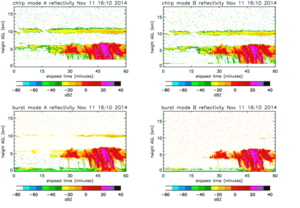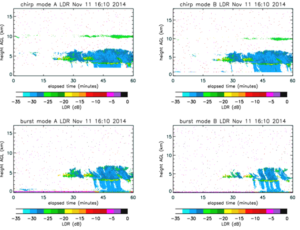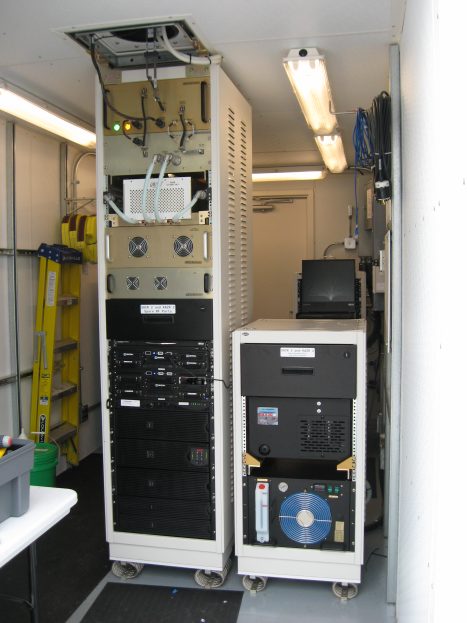KAZR is an upward-looking cloud radar operating at 34.8 GHz. KAZR has a four channel receiver, providing simultaneous reception of short pulse and chirp waveforms on co-polarized and cross polarized channels.
The KAZR antenna is mounted on top of the shelter with a short waveguide connection between the antenna and RF unit. The shelter is a customized sea container which makes the system easily transportable to different experiment sites. The custom sea container is approved for international shipping.
KAZR systems have been deployed at US Department of Energy Atmospheric Radiation Measurement (ARM) permanent sites in Oklahoma, Alaska, Azores, and at mobile sites around the world, including Antartica and the Amazon. In 2013, ProSensing installed a KAZR system at Lanzhou University’s remote weather monitoring site in Central China.



